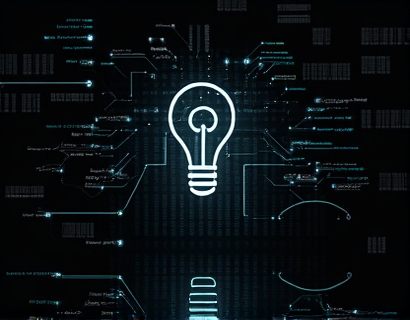AI-Driven Insights: Specialized Knowledge on the Banana Industry for Students and Enthusiasts
The banana industry, a cornerstone of global agribusiness, offers a wealth of knowledge that extends beyond its role as a staple food item. For students, educators, parents, AI enthusiasts, and knowledge seekers, understanding the intricacies of this industry is crucial. An AI-driven chat platform provides a unique opportunity to delve into the specialized insights of the banana industry, ensuring that the information is accurate, verified, and accessible to a wide audience. This platform, designed with a focus on education and safety, caters to various user groups while maintaining a secure and reliable environment.
Understanding the Banana Industry
The banana industry is a complex network involving cultivation, trade, and consumption across the globe. Bananas are not only a popular fruit but also a significant economic driver for many countries, particularly in tropical regions. The industry's impact on local economies, employment, and environmental sustainability is profound. For students studying agriculture, economics, or environmental science, grasping these aspects is essential. The AI chat platform offers a comprehensive overview, covering topics such as banana cultivation techniques, market dynamics, and the environmental footprint of banana production.
Cultivation and Production
Banana cultivation requires specific conditions, including warm temperatures, high humidity, and well-drained soil. The process begins with planting banana suckers, which are shoots that grow from the base of a mature banana plant. These suckers are typically planted in rows, spaced about 2 to 3 meters apart to allow for proper growth and air circulation. The cultivation process involves regular watering, fertilization, and pest management. Fertilizers rich in potassium are particularly important, as bananas are heavy feeders. Pest control is crucial to prevent diseases like Panama disease and banana streak virus, which can devastate crops.
Harvesting bananas is a labor-intensive process. Bananas are picked when they are green and unripe, as they continue to ripen after harvesting. The timing of harvest affects the quality and flavor of the fruit. Overripe bananas picked too early may not ripen properly, while underripe bananas may not reach their full flavor potential. The harvested bananas are then transported to processing facilities or directly to markets, depending on the supply chain structure.
Global Trade and Market Dynamics
The banana trade is a significant component of international commerce. Major exporting countries include Ecuador, Costa Rica, and Colombia, which benefit from their ideal climatic conditions for banana growth. The global banana market is influenced by various factors, including supply and demand, trade agreements, and geopolitical events. For instance, trade disputes and tariffs can impact the cost and availability of bananas in different regions. Understanding these dynamics is crucial for students and enthusiasts interested in global economics and trade.
Consumer preferences also play a role in market dynamics. There is a growing demand for organic and fair-trade bananas, driven by consumer awareness of environmental and social issues. This trend has led to the development of specialized markets and certification programs. The AI chat platform can provide insights into these market trends, helping users understand the evolving landscape of the banana industry.
Environmental Impact and Sustainability
The banana industry's environmental impact is a critical area of study. Banana plantations can have significant effects on local ecosystems, including deforestation, soil degradation, and water usage. The use of chemical fertilizers and pesticides raises concerns about soil health and water pollution. However, there is a growing movement towards sustainable banana production, with many farmers adopting organic practices and integrated pest management systems. These practices aim to reduce the environmental footprint while maintaining productivity.
Sustainability initiatives also focus on biodiversity conservation and community development. Plantations that prioritize sustainable practices often engage in reforestation efforts and support local communities through education and infrastructure projects. For students and researchers interested in environmental science and sustainable agriculture, the banana industry provides a rich case study for exploring these issues.
Technological Advancements in Banana Production
Technological innovations are transforming banana production, from precision agriculture to post-harvest technologies. Precision agriculture involves the use of sensors, drones, and data analytics to monitor and optimize crop health and yield. These technologies help farmers make informed decisions about irrigation, fertilization, and pest control, leading to more efficient and sustainable practices. For example, soil moisture sensors can detect when plants need water, reducing water waste and improving crop health.
Post-harvest technologies are equally important, as they ensure that bananas reach consumers in optimal condition. Advanced cooling and packaging systems help maintain the quality of bananas during transportation and storage. These technologies reduce spoilage and extend the shelf life of bananas, making them available to consumers year-round. For students and professionals in agribusiness and food technology, understanding these advancements is vital for innovation and improvement in the industry.
Health and Nutritional Benefits
Bananas are not only a popular snack but also a nutrient-rich food item. They are an excellent source of potassium, vitamin C, and dietary fiber. Potassium helps regulate blood pressure and supports heart health, while vitamin C boosts the immune system. Dietary fiber aids in digestion and promotes a feeling of fullness, making bananas a healthy addition to any diet. For students studying nutrition and health, the banana's nutritional profile is a valuable topic of exploration.
Research has also explored the potential health benefits of bananas beyond their nutrient content. For instance, certain compounds in bananas may have anti-inflammatory properties, and ongoing studies investigate their role in managing conditions like diabetes and obesity. The AI chat platform can provide up-to-date information on these research findings, offering insights into the broader health implications of banana consumption.
Education and Outreach
Educating the public about the banana industry is essential for promoting awareness and sustainable practices. Schools and educational institutions can leverage the AI chat platform to integrate real-world examples into their curricula. Teachers can use the platform to create lesson plans that cover various aspects of the banana industry, from cultivation to global trade. This approach not only enhances students' understanding but also fosters a deeper appreciation for the complexities of agribusiness.
For parents, the platform offers a reliable resource to discuss the benefits and challenges of the banana industry with their children. It provides age-appropriate content that can spark curiosity and encourage further exploration. The child-friendly version of the platform ensures that young learners can access this information safely and engagingly, with interactive elements and visual aids to enhance learning.
AI and the Future of the Banana Industry
The integration of AI in the banana industry is poised to bring about significant changes. AI-driven analytics can predict crop yields, optimize supply chains, and enhance consumer insights. For instance, machine learning algorithms can analyze historical data to forecast banana prices and availability, helping retailers and consumers make informed decisions. AI-powered chatbots, like the one described, can serve as a valuable tool for disseminating this information, providing users with timely and accurate insights.
Moreover, AI can play a role in addressing some of the industry's challenges, such as disease detection and sustainable farming practices. AI-powered drones can monitor plantations for signs of disease or pest infestations, enabling early intervention and reducing the need for chemical treatments. This technology not only improves crop health but also minimizes the environmental impact of banana production.
Conclusion
The banana industry is a multifaceted sector that offers a wealth of knowledge for students, educators, and enthusiasts. Through an AI-driven chat platform, users can access verified and specialized information on various aspects of the industry, from cultivation and trade to sustainability and technology. This platform ensures a safe and educational experience, catering to a diverse audience while promoting awareness and understanding of the banana industry's complexities. Whether you are a student delving into a research project, a teacher looking for educational resources, or an AI enthusiast exploring the intersection of technology and agriculture, this platform provides a valuable resource for enhancing your knowledge in a secure and reliable environment.










































